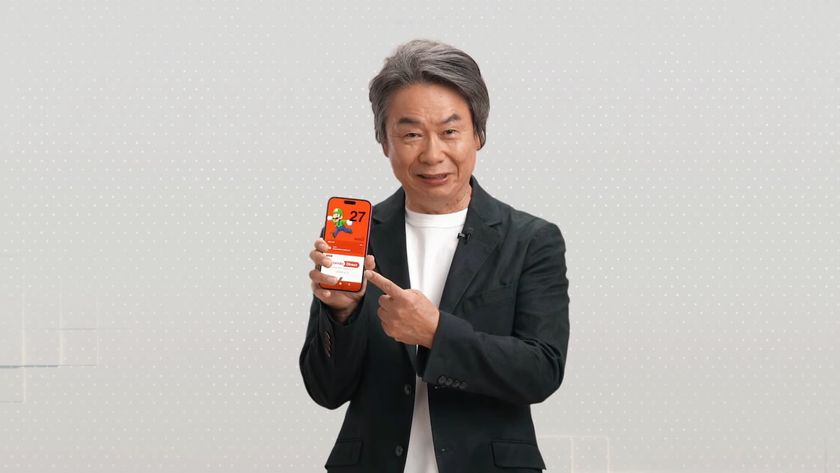30 years later, Sonic the Hedgehog 3 is still a stone-cold classic: "We wanted to make the third game more epic than Sonic 2"
Interview | In conversation with the creators of Sonic 3 and its expansion Sonic & Knuckles
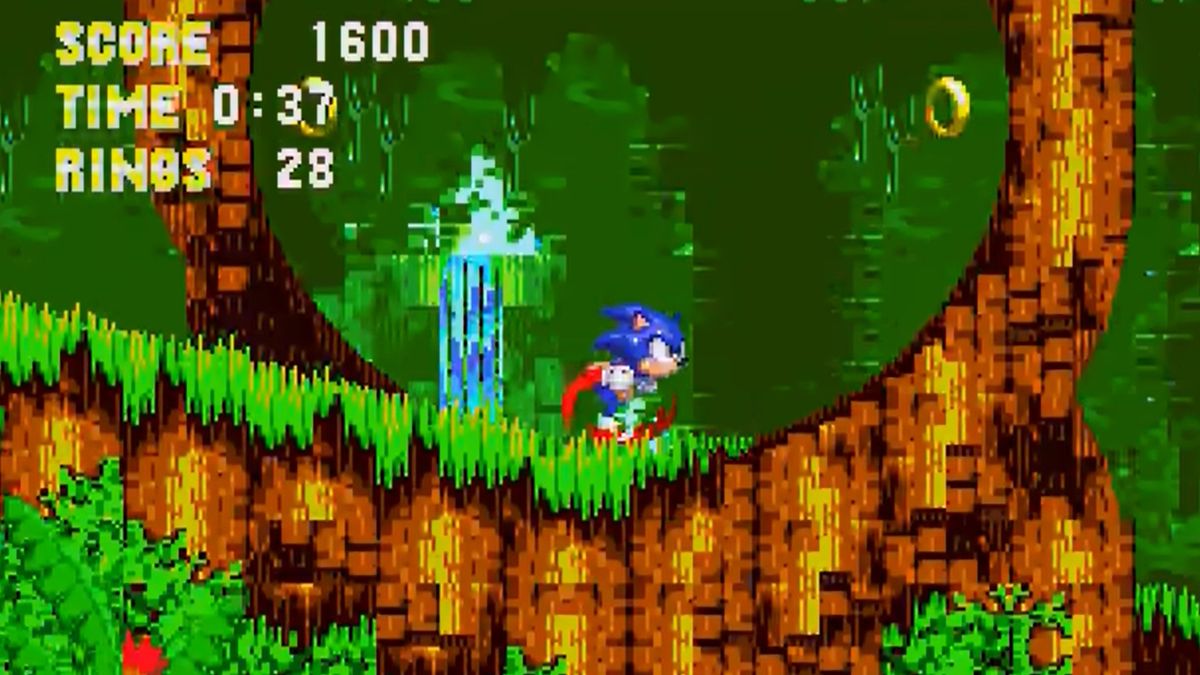
Sonic The Hedgehog 2 was a game that really redefined the standards for a blockbuster video game release – its extravagant hype campaign and co-ordinated international release were very uncommon at the time, but they paid dividends for Sega as the game sold millions of copies worldwide. But the creation of that game was fraught – a large number of concepts were scrapped outright, a prototype cartridge was stolen from a toy fair in New York and major changes were still being made during the final week of development.
One of the big problems was the choice to develop the game at Sega Technical Institute in the USA, with a mixed Japanese and American development team – in Retro Gamer 175, game designer Hirokazu Yasuhara told us that, "Trying to establish a multicultural development team was meaningful, but it should not be done for a project with a very tight schedule."
The result was that while Sonic development continued at STI, the American developers would split off to work on Sonic Spinball, while Sonic The Hedgehog 3 was developed at Sega Technical Institute in the USA with almost exclusively Japanese staff. Key returning staff from Sonic 2 included Yuji Naka, now a producer as well as lead programmer, Hirokazu Yasuhara, credited as director as well as senior game designer, and senior programmer Masanobu Yamamoto. Takashi Iizuka, today the Sonic series producer at Sonic Team, came on board as a senior game designer having previously worked on Golden Axe III.
"I was living outside of Japan for the first time during Sonic 3's development, so it was one culture shock after another on a daily basis for me," he recalls. "I hadn't even heard of Halloween before, so it was really surprising to see everyone at STI sitting down for serious meetings while dressed up in costumes."
Hedge your bets
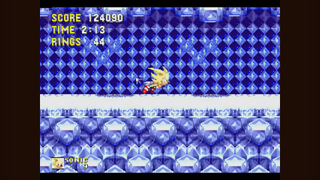
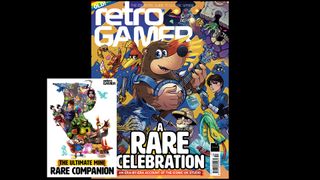
This feature originally appeared in Retro Gamer magazine. For more in-depth features and interviews on classic games delivered to your door or digital device, subscribe to Retro Gamer.
Just like Sonic 2, the third main game was also subject to major time pressures – in part because of experimental work that the team did during early development. Feeling that the previous game had already come close to the limits of the Mega Drive, Sonic 3 was originally slated to use the same enhancement chip as Virtua Racing. Speaking to Japan's Sega Magazine in 1997, with translation from shmuplations.com, Yuji Naka said, "Up till about June of 1993, the Sonic 3 development included the SVP. It featured isometric 3D graphics, and you could rotate and turn the game field." Of course, this design was scrapped, with Naka continuing, "Unfortunately, in June we realised that development of the SVP chip probably wouldn't be finished by the end of the year. So we abandoned all the programming and work we'd done up to then. In the remaining six months we had for Sonic 3, we had to start entirely from zero and re-do everything."
Virtua Racing ultimately launched just six weeks after Sonic The Hedgehog 3, but in that interview, Naka claimed that meeting a February 1994 release date was crucial because Sega had entered into a $20 million promotional deal with McDonald's for that month. Takashi Iizuka confirms that "it wasn't realistic to change that" promotion to coincide with a slightly later release, but also he offers a different reason for the abandonment of the enhancement chip, telling us, "Support for the SVP chip was nothing more than a research experiment to see if we could get Sonic moving in 3D. In the end we found that it could only handle a polygon count similar to Virtua Racing, so we decided that it wasn't a good fit for a Sonic game."
Regardless of the precise reasoning for abandoning the SVP chip, the result was the same – by June 1993, there was a tight deadline to meet and no substantial work done. The team would settle on revisiting the tried-and- true platform design. "We wanted to make Sonic 3 more epic than Sonic 2," says Iizuka. "Specifically, that meant strengthening the story elements, adding uniqueness to the Act 1 and 2 pairs, adding a new playable character, expanding each stage, adding new routes for each character and enhancing 2P versus play."
Sign up to the 12DOVE Newsletter
Weekly digests, tales from the communities you love, and more
Some of these enhancements were very straightforward. Distinct musical arrangements and subtle background changes helped to differentiate Act 1 from Act 2 of each stage, as did the addition of more bosses. "We didn't want Act 1 and Act 2 to feel too repetitive, but rather have each reach its own peak. Act 2 featured battles with Dr Eggman [Robotnik], so for Act 1 we created battles against just his robots, spicing up the fun when it came to boss battles," Iizuka recalls. The new playable character was Knuckles, designed by Takashi Yuda.
"We wanted to create a character of a similar size and stature to rival Sonic beyond the Mecha Sonic and Metal Sonic characters of the previous games. Those characters were very cool, but Knuckles let us create an antagonist where we could really shape his personality and take on the journey that we did," says Iizuka. "As for his abilities, we were always keen to explore how alternative gameplay mechanics and traversal could make an impact on Sonic's traditional level design, and we felt that his ability to glide and climb gave players new ways and reasons to play each zone."
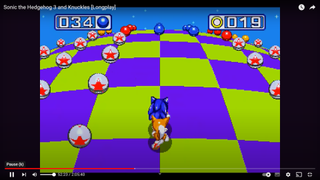
Those abilities actually gave Sonic 3's level designs a whole new shape. "Knuckles' ability to punch through rocks allowed us to create routes that only he could use," Iizuka explains. "Sonic's playstyle was horizontal, while Knuckles' climbing and gliding allowed us to bring in vertical play. He allows for different experiences from Sonic, such as climbing walls to find secret areas or gliding between walls to navigate a way upward."
Even if you're not playing as Knuckles, this is apparent. Sonic 3's stages are massive, sprawling things compared to those of previous games, with designs that are up to twice as tall as those featured in Sonic 2. Sonic 3 increased the use of vertical wrap-around in its stages compared to Sonic 2, allowing for more stages with a feeling of even greater height. Adding Knuckles also aided the storytelling aspect of the game, giving an extra dimension to the plot. "We had the idea from the beginning that Knuckles would first be an enemy but later become playable. So we worked Knuckles into the story and had him appear as an enemy from the outset," Iizuka recalls.
The first two games had used short in-engine scenes to depict key events and that technique was expanded here – Knuckles managed to dispossess Sonic of the Chaos Emeralds in the game's intro, and showed up frequently in scripted short in-engine scenes to depict was expanded here – Knuckles of the Chaos Emeralds in the game's intro, and showed ambushes from there on. Just like the story scenes in the prior games, Sonic 3's story scenes were designed not to use text or voice acting. "As Sonic is an action game played all around the world, we didn't want to use text to tell the story, but thought of ways to make cutscenes that could be followed visually," Iizuka explains. "It was very difficult to express the scene of Knuckles actually having been deceived by Dr Eggman without using any text."
The whole hog
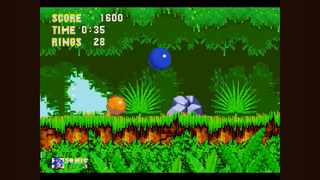
Magazine previews mentioned a "helper mechanic" in which Tails could provide aid to Sonic – something later seen in a prototype discovered in 2019, but which ultimately fell by the wayside. "Just like every gameplay feature decision, we try things, see how they feel, test them and if they don't add to the gameplay experience then we don't see them as necessary as a final game feature," responds Iizuka when asked about it. "We felt this might detract from the overall player experience with Sonic so it didn't make it into the final game." That decision didn't stop Tails from helping out though – players were given the ability to control him while flying, and Sonic could grab hold of him for an airlift to higher places during co-op play. Tails also gained the ability to swim, but wasn't strong enough to carry Sonic while doing so.
For Sonic, the team experimented with a variety of new techniques including a move that is coincidentally close to the Drop Dash from Sonic Mania, which was discovered in a Sonic 3 prototype found in 2019. However, the other characters showed the way for Sonic's newest trick. "As you know, up until Sonic 2 you could control your character using only the jump action. But to add the flight action for the newly added Knuckles and Tails, it was necessary to add the ability to press the jump button while in mid-air. And because Sonic can't fly or glide, we added the Insta-shield," says Iizuka. This move allowed Sonic to briefly gain invincibility and an increased attacking range, which is great for taking out spiked enemies.
While every character gained elemental protection and other benefits from the new Flame, Water and Lightning Shields, Sonic gained brand-new moves – a mid-air dash, a bounce attack and a double jump respectively. "Coming up with new ideas and gameplay mechanics for how these Shields could protect the player or interact with objects in the world, like you say, the Magnetic Rings, was a lot of fun," says Iizuka. "We really looked at how the different elements would work together – for example, the Flame Shield could provide a quick burst of speed, but you'd have to be careful not to fall into water if you didn't want to lose it. I felt that it all contributed to a more engaging experience."
Everything about Sonic 3 was shaping up to be bigger and better than ever. A brand- new special stage and three bonus stages were in the works, and instead of taking place on a selection of standard stages, the new Competition Mode had brand-new bespoke designs tailor-made for racing. Boss battles required more strategy, including some encounters in which the enemies needed to be tricked into hurting themselves. Sonic and Tails had redesigned sprites to go with a refreshed graphical direction, and the game was even set to feature music from Michael Jackson as well as Sega's highly capable composers – read more about that in The Jackson Factor. Best of all, Sega had managed to keep everything highly secret in a way that it hadn't for Sonic 2.
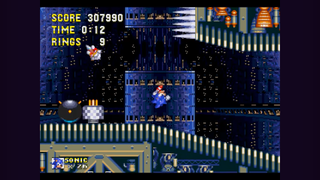
But as the autumn of 1993 wore on, it became clear that it simply wasn't going to be possible to finish the game as planned while meeting that all-important February release date. In the Sega Magazine interview, Naka stated that conversations about splitting Sonic 3 across two cartridges came "at the very end of development" and that the method to combine cartridges was figured out "at the very, very last minute", with the game's programming revised to take the Lock-On cartridge into account. "It was a very difficult decision to split the game into two cartridges. One major issue was how to make a cohesive product when it came to the second half of the game," says Iizuka. "Data couldn't be carried over if we used two separate cartridges, making the Knuckles routes we had built into the Sonic 3 stages unplayable. That's where the idea came for the Lock-On cartridge, allowing the two cartridges to work together. I remember thinking it was an insane idea! I was very impressed with Sega being able to make it a reality." The Sonic 3 prototype found in 2019 suggests that the process of splitting the games started about a month before the final build.
The decision to split the game had some knock-on effects in the game design. Flying Battery Zone was originally positioned between Carnival Night Zone and Ice Cap Zone, but was moved to become the second stage of Sonic & Knuckles instead. "I don't think there were any other stages that were added or moved, but we did make some spec changes," says Iizuka. "The Launch Base boss was an Eggman boss as usual, but splitting the game made it the last stage of Sonic 3, so we added Big Arms. Mushroom Hill became the first stage of Sonic & Knuckles, so we readjusted the difficulty to make it easier than originally planned." Two bonus stages were left unused to be finished later on, and most significantly Knuckles was held back as a playable character and appeared solely as an antagonist outside of Competition Mode.
Happy blue year
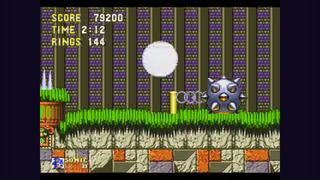
Sonic 3 released on 2 February 1994 in North America, and followed to the UK on 24 February, with some European countries and Australia following in March. In Japan, where the Mega Drive was less popular, the game finally released on 27 May. Despite its truncated nature, the game was very well- received by the majority of gaming magazines. Mean Machines Sega gave it 94%, with Radion Automatic saying, "The whole game is packed with new ideas and the levels, whilst few in number, are absolutely huge." Mega also noted the size of the levels and praised the "new and bizarre power-ups" and concluded by saying that "this is probably about as good as Sonic can possibly get".
By this point, critics had developed a fatigue for platform games in general and Sonic in specific, but Sonic 3 proved good enough to overcome it. Computer & Video Games awarded the game 94%, with reviewer Deniz Ahmet admitting that he was "all set to be highly critical of Sonic 3 after hearing that it was more of the same", but found "there are so many new and imaginative ideas that I have no complaints". Likewise, Sega Zone's Jonathan Nash "tried to hate it", but found that "my pre-prepared words of disapproval were forgotten" upon playing it, and gave it 93%.
Where complaints arose, they were mostly about the difficulty level. Mean Machines Sega said that "completing the game without the Emeralds is not very difficult at all", while Sega Zone felt that you could "quite easily storm through the game in an afternoon". Sega Pro gave it 87%, saying that it was a "state-of-the-art platformer" that would have scored 95% were it not for the £59.99 price tag, arguing "few games are worth that much money and when you couple this with the length of time it'll take to complete it, it's a joke". GamesMaster also gave the game 87%, saying that "the similarities are far more numerous than the differences" when compared to its predecessors. Digitiser made similar complaints in a review that is remembered to this day for its 72% score.
Even if you weren't reading magazines, Sonic 3's incomplete nature was somewhat obvious – the game's notoriously difficult-to-access level select screen listed stages that were completely inaccessible, and the sound test was filled with loads of unused music. But the fact that Sonic 3 had been split into two parts was no secret at all, with Mean Machines Sega's review of Sonic 3 talking about future plans for "a deluxe 24-meg edition of the game, with extra levels and enhanced play", as well as "an upgrade for the 16-meg edition, a plug-through cart with two ends, which will also work with your Sonic 1 and 2 carts to create extra levels". Development of a single-cartridge version of the complete game was underway but ultimately scrapped in favour of the plug-through cartridge that became Sonic & Knuckles. For Iizuka and the rest of the team, the extra time was a major relief – though Sonic & Knuckles launched just eight months after Sonic 3, compared to over fourteen months between Sonic 3 and Sonic 2, Sonic & Knuckles was a far more relaxed project.
"The development time for Sonic 3 was extremely tight, and there was barely time to sleep," Iizuka recalls. "But we still worked on some Sonic & Knuckles stages during Sonic 3 development and Sonic & Knuckles development continued in the time between Sonic 3's master ROM and its launch date, so launching it eight months later wasn't that tight of a schedule. That's why we had time to come up with additional specs like Lock-On cartridges and Knuckles in Sonic 2." With the engine already in place, the team was free to create the remaining planned stages and implement the two additional bonus games, but for many players the opportunity to take control of Sonic's new rival was the key attraction.
"As you know, in the latter half of the story Knuckles learns that he had been deceived by Eggman and joins Sonic. So the idea was to add him as a playable character after the player completed Sonic's storyline," says Iizuka, explaining how things would have worked had Sonic 3 been released as a singular product. Sonic & Knuckles allows you instant access to the echidna whether combined with Sonic 3 or not, but in spite of that change of arrangements, Knuckles' story is still influenced by the original plan.
"When playing as Knuckles, Sonic has already defeated Eggman according to the storyline, so the Death Egg is gone. That's why we replaced Eggman with Egg Robo, and the last boss is Mecha Sonic rather than the Death Egg Robot," Iizuka tells us. "Instead of just adding a playable character, we wanted to tell a story that fits the character." Sonic & Knuckles also included The Doomsday Zone – a secret final confrontation that can only be accessed as Sonic, and only if you've gained enough Chaos Emeralds to transform into Super Sonic or his upgraded Hyper Sonic form. "It was designed as an aerial battle. Sonic is able to fly when transformed, so we removed the ground completely and had him flying through space," says Iizuka. This climactic battle proved to be the origin of a tradition of the Sonic series, as it provided the basis for memorable boss fights in later games including showdowns against Perfect Chaos, Finalhazard and the Time Eater.
New shoes
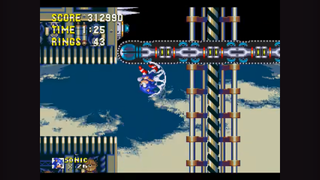
Released globally in October 1994, Sonic & Knuckles received another strong set of reviews. Mega awarded the game 92%, saying, "The main criticism about the first three games being too easy could in no way be applied to this!" Sega Power felt similarly and gave the game 90%, while Sega Pro's 90% review highlighted the differing routes each character offered. In CVG's 91% review, Rik Skews noted that he "expected Sonic & Knuckles to be scrappy" due to its short development time but felt that it "makes a great conclusion to the series". GamesMaster's 90% review felt that the increased difficulty and backwards compatibility meant that the game was "going to last".
A lack of originality was the main cause for critical concern. Though Sega Magazine awarded Sonic & Knuckles 92% and Richard Leadbetter called it "the perfect buy if you already own all the other Sonic games", Radion Automatic recommended that those "looking for something to renew your faith in the genre" try Dynamite Headdy instead. In Mean Machines Sega, Steve Merrett felt it was "just more of the same and, consequently, is likely to be usurped by Sega's new hero, Dynamite Headdy", and offered a review score of 85%. Likewise, in Games World's 83% review, Dave Perry felt that "our once plucky blue hero is starting to look tired". The brilliance of Sonic & Knuckles was that while it was substantial enough to work as a stand-alone game, the Lock-On cartridge made it a unique offering at a time when expansion packs were typically a technical impossibility in the console market.
What had started off as a problem ended up being a creative and commercial triumph. Both halves of the project were fine games taken alone, but elevated when joined together – Sonic 3 owners got a great reason to revisit the game, and got benefits like Tails and the save game feature that didn't exist in Sonic & Knuckles alone. Add the other benefits of the Lock-On cartridge – see Locked And Loaded for those – and Sonic & Knuckles was the perfect addition to a Sonic collection. For Sega, it provided not only a key game for the holiday season of 1994, but a way of shifting more copies of back-catalogue games. Overall, Sonic 3 and Sonic & Knuckles combined sold four million copies.
Sonic 3 and Sonic & Knuckles later made their way to PC in 1997 as part of Sonic & Knuckles Collection, which offers the ability to play either game individually or both together. This version features MIDI music and replaces some of the tracks attributed to Michael Jackson's team with tunes that were present in a prototype build of the Mega Drive game. The games arrived on the Saturn as part of Sonic Jam the same year with no substantial changes, and emulated Mega Drive versions were a staple of Sega's compilations until 2010, when re-releases dried up. Sonic 3 & Knuckles finally returned in combined and remastered form as part of the Sonic Origins compilation in 2022.
This version featured new arrangements of the music found in the Sonic 3 prototype and Sonic & Knuckles Collection, suggesting that while no legal action has ever been made public, music rights were at the heart of that lengthy absence. Looking back at Sonic 3 and Sonic & Knuckles, Iizuka's only quibble with the end product has been resolved. "I do wish we had been able to sell Sonic 3 and Sonic & Knuckles as one complete game. So I was happy that we were able to accomplish that with Sonic Origins last year," he tells us. But the split release has done nothing to damage the standing of the game among fans – while Sonic 2 is arguably the classic Sonic game that has the most appeal among the general gaming population, Sonic fans tend to hold Sonic 3 & Knuckles as the best of the classics.
"It makes me truly happy to hear that," Iizuka says. "Many of the people on the development team were veterans who had worked on Sonic 1 and Sonic 2, and I think it's the result of everyone's determination to make a game that outshines the previous two. I'm proud that I was able to be a part of Sonic 3's development."
This feature originally appeared in Retro Gamer magazine. For more fantastic in-depth features, interviews, and more on classic games, subscribe to Retro Gamer or pick up a single issue today.
Nick picked up gaming after being introduced to Donkey Kong and Centipede on his dad's Atari 2600, and never looked back. He joined the Retro Gamer team in 2013 and is currently the magazine's Features Editor, writing long reads about the creation of classic games and the technology that powered them. He's a tinkerer who enjoys repairing and upgrading old hardware, including his prized Neo Geo MVS, and has a taste for oddities including FMV games and bizarre PS2 budget games. A walking database of Sonic the Hedgehog trivia. He has also written for Edge, games™, Linux User & Developer, Metal Hammer and a variety of other publications.

